If you are a sales manager, you are responsible for fostering a culture of continuous learning on your team. It’s up to you to motivate your reps to take full advantage of the sales training resources you provide and apply what they learn in their sales engagements. But don’t just enroll your team in training and wait for the learning to sink in. Be sure to participate along with them so you can enrich your one-to-one coaching sessions.
Since there are so many sales training options out there, I’ve made a list of the best sales training ideas, activities, and games. Read through the list to determine the best tactics and programs to use when training your sales team.
Table of Contents
- Sales Training Ideas
- Interactive Sales Training Ideas
- Sales Team Training Games
- Sales Team Building and Sales Meetings Games
- Can you also use games for sales training?
- Benefits of Sales Training Games
1. Use a sales training template. [Featured Resource]
A sales training and onboarding plan consolidates role expectations, training timelines, and resources into one place for your newly hired salespeople.
Every sales team has different goals and expectations, so it’s important to craft a custom training plan specifically for your new sales hires.

For instance, I completed IBM Sales Finishing School several years ago, and it involved a series of online and in-class sessions. For the last couple of months of the training, I had mock sales calls with retired IBM salespeople, which led to a sales presentation to the General Manager of IBM Canada. The experience was stressful, but it was the best sales training experience I ever had.
Pro tip: If you’re looking to start your sales training program, use this sales training plan template. It was developed with the sections you’ll find on most sales training plans. You can use it to build out a more detailed and specific onboarding plan for your organization.
2. Subscribe to industry publications, newsletters, and podcasts.
At HubSpot, one of our mottos is “Always be learning.” When a sales rep is complacent and not motivated to build their sales skills, it can be demoralizing and encourage them to seek out a new role elsewhere.
Encourage your sales team to stay engaged.
They can listen to sales podcasts like Sales Gravy and Conversations with Women in Sales.
You can also try adopting AI coaching agents and tools that assess sales conversations in real time, and use this to coach the salesperson on how to improve their approach.
Skill-building is crucial for salespeople regardless of where they are in their careers. As the industry shifts and new thought leaders emerge, reps can use the knowledge from these leaders and publications to stay in touch with new best practices and continuously build their knowledge base.
When I was selling a SaaS CRM product years ago, I brought up a common objection in a sales training session that customers mentioned on every discovery call or live demonstration.
However, the sales executive insisted that what customers were looking for wasn’t important and that the company’s proprietary forecasting feature was more important. Unfortunately, most prospects disagreed, and they subscribed to the competitor solution that offered the feature they wanted.
Listening to customers and keeping your finger on the pulse of your industry are two crucial ways to stay on top of your game.
3. Have the team do objection-handling training exercises.
I once spoke to a software engineer who described his job as “coming in and figuring out how to break our software every day.” In other words, he and his team worked to determine the best ways to ensure that the break or breach wouldn’t happen to a customer at a critical moment.
Why not take a similar approach with your sales team in your next sales meeting or kickoff event?
Have your reps nominate the objections they hear from customers about your products or services. Then, have them develop — on their own, or in groups — the most convincing ways to overcome those objections. That way, they’ll be prepared when someone brings that concern up on a call.
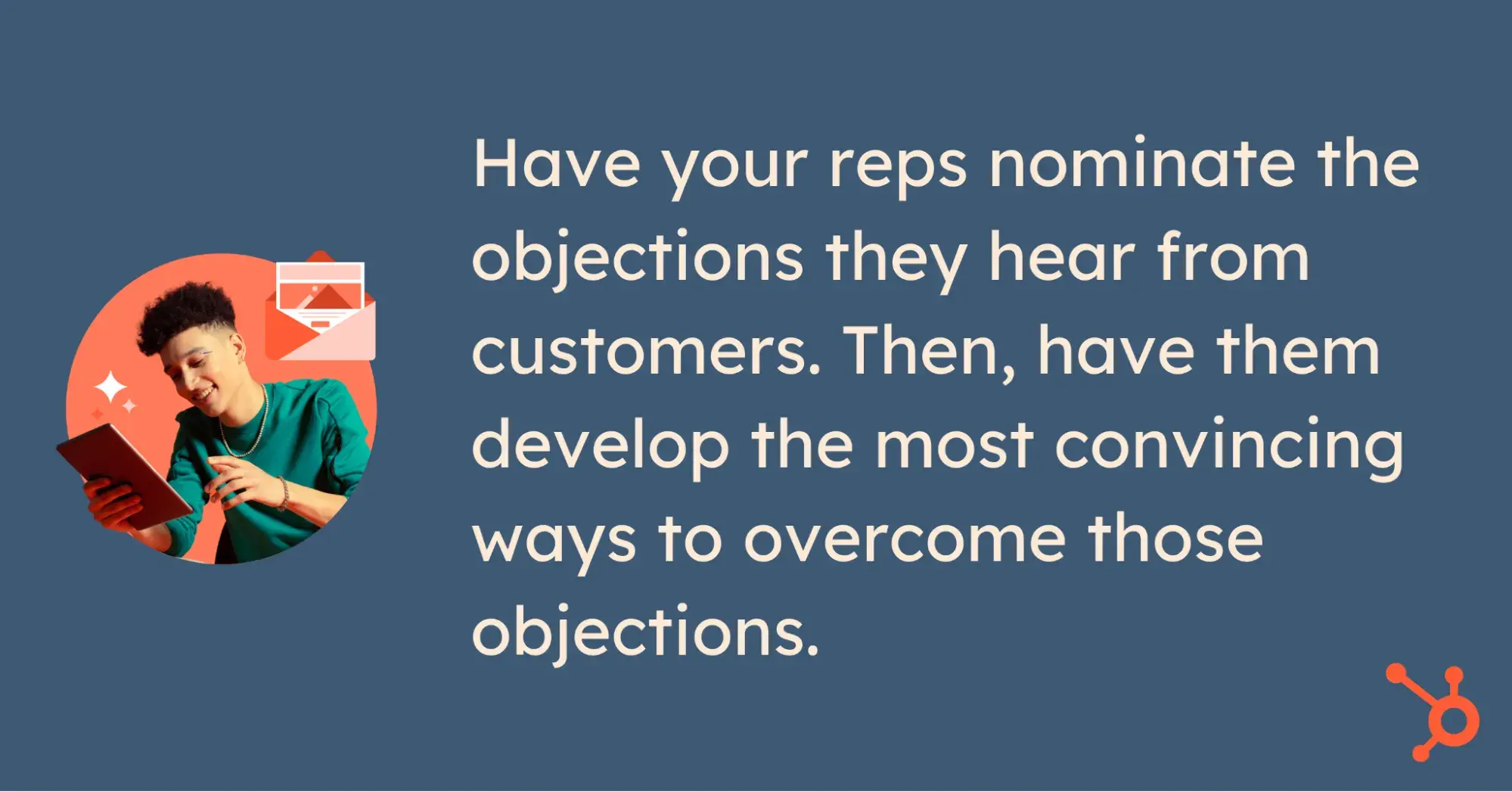
4. Get certified.
Strengthen your team’s understanding of selling best practices by requiring or suggesting they acquire a useful sales certification.
For example, HubSpot Academy has a free Inbound Sales Certification and Course available online, including insights and advice from industry experts. The course has been taken thousands of times and can be a helpful step in making salespeople better at their jobs.
You can explore other sales courses available in HubSpot Academy as well.
5. Share stories of success and failure from the field.
In your sales meetings, encourage your sales team to share their success stories and give them a safe space to describe deals that went by the wayside.
Reps can open up about a deal they closed by adopting something they learned in sales training. Or they can describe how they fell short, or didn’t achieve the outcome they were expecting.
Like any great storytelling experience, help them recognize the moral or lesson learned from the experience. It will improve how they handle the problem next time or give them confidence that they are on the right track.
Sharing wins and losses can serve to guide and inspire new and existing salespeople. They can even give your product management, customer success, and marketing teams ideas for:
- How to best address product functional gaps or modify their pricing models.
- New use cases for your products or services that can add value for existing customers.
- Marketing campaigns, blog posts, or case studies that address topics your prospects and customers are interested in.
- Updating competitive battle cards or sales playbooks.

6. Listen to recorded calls to develop conversational intelligence.
This sales training exercise involves playing recorded sales calls or meetings and discerning the good, the bad, and the ugly. Try to maintain a coaching mindset throughout these sessions, meaning recognizing the strengths and weaknesses of each call, and how to improve on similar calls next time.
Listen to the call alongside your rep, with each of you writing down what you heard that could have been said better, or what was said that stuck out in a great way.
Discuss alternative sales call approaches if you listen to ones that go off the rails despite a rep’s best efforts.
Compare notes to see how attentive your rep is and to hear their opinion on how the call went. There may be missing context from emails or previous phone calls that set the stage for how the call went, so make sure you have a complete picture before passing judgment on what you hear.
Constructive feedback equips reps to go into future calls with more confidence and the right tone and messaging.
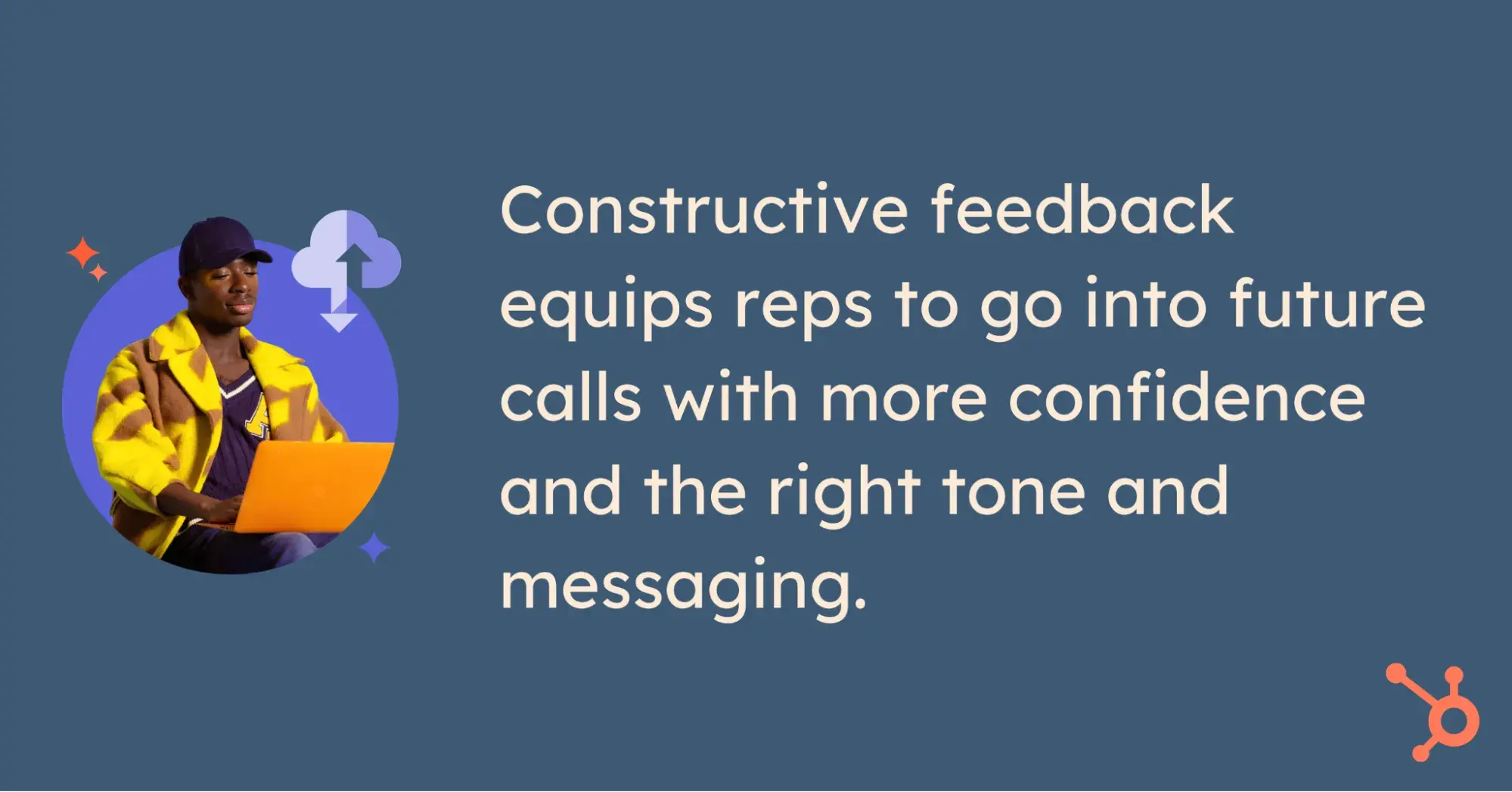
7. Present your buyer’s journey.
First, allow new hires to complete onboarding and have several months of experience under their belt to draw insights from. Then, when they are keeping pace with their more experienced colleagues, task them with presenting what the typical buyer’s journey looks like for your product or service.
The presentation could follow one of your buyer personas as they realize their problem and look for solutions. It could also describe how they discovered your business and what their deciding factors were for choosing to do business with you.
This will make salespeople sympathetic to their future customers’ problems, get a grip on the entire sales cycle, and understand how your product/service is actually helpful.
8. Conduct a competitive analysis.
Chances are, your company has some competitive intelligence. Your company might even have a competitive analysis team. However, new sales hires might not know all of your comparative strengths and weaknesses, even though those points may come up on their very first sales call.
Have reps conduct their own competitive analysis through online research and by asking prospects for their opinion on their investment. Competitive intel offers many benefits for you and your company. It:
- Equips your team with competitive battle cards or analyst reports that can help them overcome objections and emphasize your relative strengths.
- Can focus on one specific aspect of your product/service for a more thorough deep dive.
- Compares you to your competition with a fresh set of eyes, which could offer new talking points and arguments for future sales situations.
9. Provide opportunities for mentoring or shadow programs.
Here’s where you’ll pair a new sales rep with a more established, successful one. The existing rep can walk new hires through the job's day-to-day, show what success looks like, and serve as a mentor for personal and professional growth.
10. List your potholes.
Dan Tyre, prior sales director here at HubSpot, recommends a tactic to foster self-reflection and personal growth in new hires.
He suggests new reps set up a written list or spreadsheet of the three “potholes” they fall into each day, as a way of holding themselves accountable, taking risks, and reviewing growth opportunities.
11. Brainstorm sales call icebreakers.
Even the most seasoned reps need a little help breaking the ice with new contacts and prospects.
A great way to keep contacts engaged (aside from sending the dreaded “checking in” emails) is to send relevant articles to your contacts, which may spark further conversation.
It may sound simple, but there is an art and a science to using this method to keep contacts engaged. It’s ideal if you send information that addresses a specific topic you discussed. However, the occasional ebook or article that can help your customer or prospect build a business case for doing business with you is a good way to keep your company in mind.
Spend some time with your team, taking them through different engagement methods to help them avoid being ghosted by their contacts. This could also be a great time to have some of your senior reps share best practices with newer members of the team.
Pro tip: If your sales team needs a more robust solution for keeping the conversation going, consider training your team to use software such as Icebreaker by UpContent. Icebreaker integrates directly with your CRM to track and log the effectiveness of third-party content shared with your leads.
Interactive Sales Training Ideas
- Decision-making simulations.
- Sales negotiation workshops.
- Sales boot camps.
- Sales technology demos.
- Cross-department shadowing.
- Industry conference or trade show networking role-playing.
1. Decision-Making Simulations
The ability to influence a prospect or customer’s decision-making is a key sales skill that can be practiced in role-playing exercises.
Create realistic scenarios where participants (acting as the prospect) are faced with a complex decision about a scenario that could be addressed by your products or services. These scenarios could include role-playing a client with a limited budget but would be a strong customer fit, or selling a custom enterprise solution to a large client.
The goal here is to encourage your team to think critically about how to influence or even disrupt a prospect’s business decision.
For example, if buying decisions are made by committee or by specific executives, help your champion to build a business case for a web conference or meeting with all of the key stakeholders.
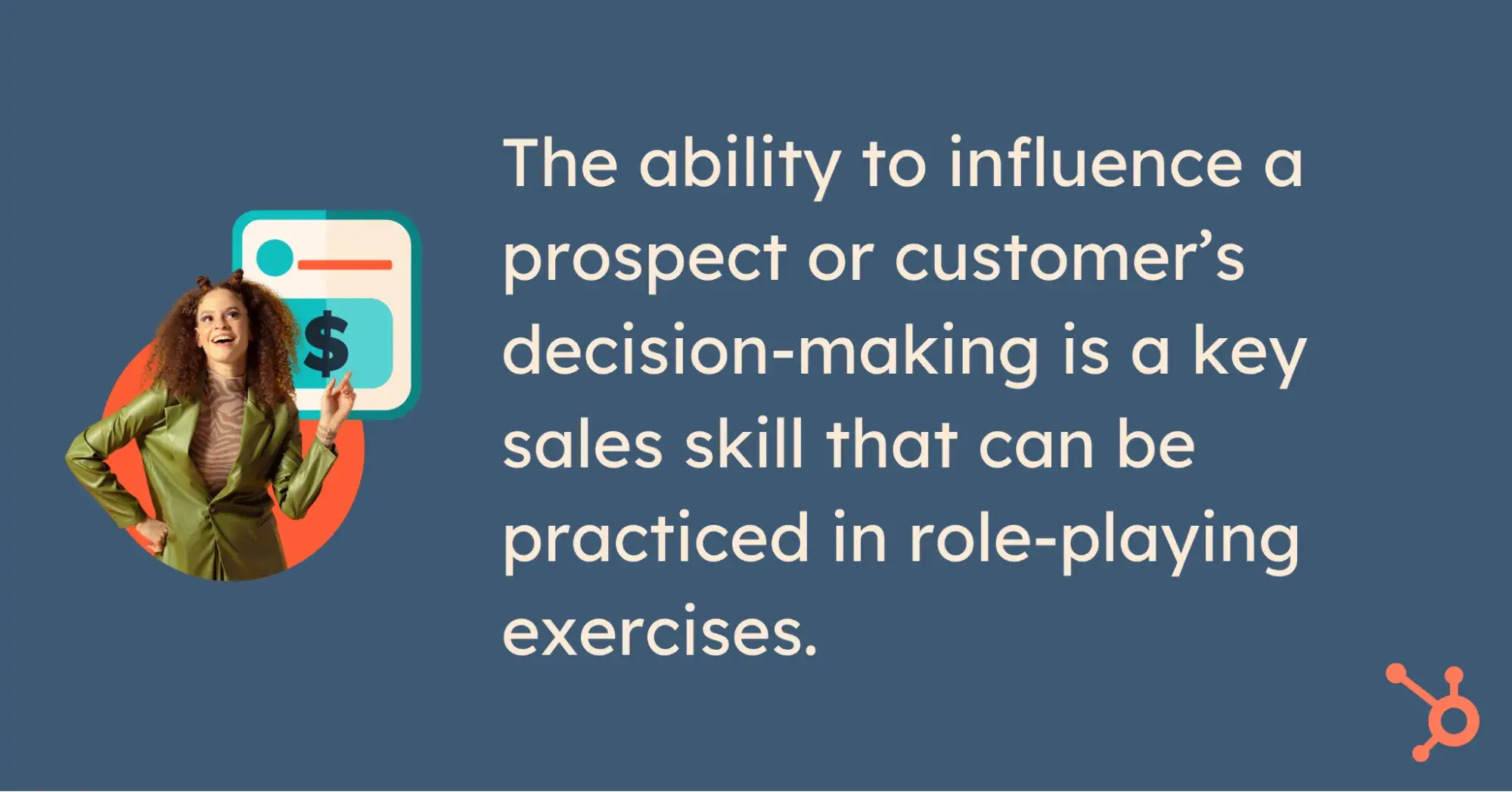
2. Sales Negotiation Workshops
Once your sales team has completed formal training, this interactive enrichment exercise is the perfect follow-up.
Conduct an interactive workshop where participants can practice negotiation techniques they learned through role-playing exercises. Provide feedback and guidance on the effectiveness of the negotiation strategies they used.
3. Sales Boot Camps
Learning in a community of your peers is a great way to absorb lots of information in a short period of time.
If your sales onboarding is fast-paced, try a sales boot camp at a yearly kickoff meeting or retreat to traditional and interactive learning curriculums.
Host a multi-day immersive sales training program that includes workshops, team challenges, and simulations, focusing on various aspects of the sales process. End this program with a celebration or certificate of completion to end the experience on a grand note.
4. Sales Technology Demos
It‘s one thing to read marketing materials about the product you sell. It’s another to try it out for yourself.
To give your sales reps an authentic selling experience, conduct sales tech demos as part of the sales training process.
Arrange hands-on demos of different sales tools and technologies, allowing participants to explore and understand their benefits and functionality.

5. Cross-Department Shadowing
Turn interaction on its head with the shadowing technique.
Pair up sales team members with colleagues from other departments (e.g., marketing, customer service) to promote collaboration and understanding of the entire customer journey.
Sales reps will walk away from this training with a different perspective on the way a customer interacts with the business when making a purchase.
6. Industry Conference or Trade Show Networking Role-Playing
Conferences like Inbound are great opportunities to initiate sales conversations and catch up with partners and customers. They are concentrated gatherings of your target audience who are open to learning about the product or service you sell.
I often used events like Microsoft Ignite to meet prospects I wouldn’t otherwise get the chance to meet face-to-face. I often introduced existing customers to prospects that I was working with to close a deal. The advocacy of an existing customer is often just what you need to convert a prospect that has been waffling on a decision even when you both know your solution ideally suited to their needs.
Use this role-play exercise as a warm-up for your booth team.
Can you also use games for sales training?
The short answer? Yes, you can.
Sales professionals are competitive by nature, and they are driven by rewards and prizes. Gamification is a great way to improve sales performance when morale is low, or even when you need a way to liven up your sales meetings.
The games and competitions on the list below can be motivating and a fun change of pace, yet I always looked forward to sales SPIF (sales performance incentive fund) contests for KPIs like highest revenue attainment or highest deal volume.
I also enjoyed contests (and rewards) for getting customers to attend my company’s annual customer conferences. I attended a couple of events after bundling event tickets into sales, and they were memorable, motivating experiences like no other.
I can still remember a team building exercise from Open Text where we learned how to apply sales tactics by using a new sales playbook that was developed by our sales enablement team. The trainer was a high-energy, comical presenter and the topics were presented in an off-the-wall way. Even mundane topics seemed fun at the time, and the games and role-plays made them more memorable.
Benefits of Sales Training Games
No matter what sales training ideas, games, or activities you’re using in your office, they should serve the ultimate purpose of helping salespeople become high performers.
Ross Nibur, director of onboarding operations at Toast, proposes a four-step process to developing and implementing any sales training idea.
Sequentially, sales trainers should answer these four questions:
- What knowledge or skill do I want salespeople to acquire?
- Why are those skills important to them and to business growth?
- How can we ensure salespeople retain this knowledge?
- How can we support salespeople if they are struggling to learn the skill?
So, for example, you may decide you want your salespeople to improve their product knowledge. That answers question one. This information is important so reps can speak knowledgeably about products to prospects, set proper expectations for the end-user, and earn the trust of those they’re talking to, answering question two.
Question three is where you match a training activity or game to teach or outline the learning you want to highlight, so maybe you decide that a sales rep giving a successful product demo is the best training idea for addressing this need.
As for question four, new reps who fall short on their demo might be given access to additional documentation, recordings of successful demos, or demo coaching sessions to strengthen their skills.
That’s an example of a training idea implemented with purpose, a clear goal, and actionable next steps to ensure the knowledge and skills are retained.
It’s also how you take a sales training game that might seem silly on the surface, and use it to infuse your reps with confidence and experience. It’s also a great way to help sales pros remember complex topics and new strategies.
Check out some of my favorite sales team training games below.
Sales Team Training Games
- Sell Me This Pen
- Match Game
- Elevator Pitch (or E-Pitch)
- Pop Quiz
- Cold Call Bingo
1. Sell Me This Pen
Ever seen The Wolf of Wall Street?
As real-life investor (and crook) Jordan Belfort, Leonardo DiCaprio delivers this line to a group of colleagues in an impromptu selling exercise, challenging them to create a need in the eyes of a potential buyer.
The challenge could involve picking anything in the room or office. Task your reps with identifying what the problem is to which the obscure item is the solution.
From there, in a mock selling situation with a prospect (either another new rep or someone on the training team), have the rep try to get the prospect to identify the need themselves and provide the solution (in this case, the obscure product).
I played this game in a great sales training course. It was a great way to learn how to focus on uncovering the prospect’s needs instead of selling the product based on features.
2. Match Game
If your business sells multiple products, software, or upgrades, make a list of the key ones. Then, write out a one or two-sentence scenario where a potential customer would benefit from it.
Shuffle both lists and have salespeople match the problem to the solution so they can determine when someone is a good candidate for a certain solution. Here’s an example of what that might look like.
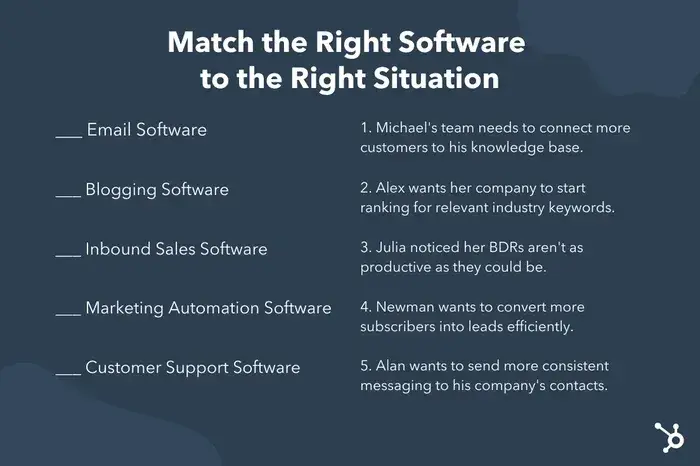
3. Elevator Pitch (or E-Pitch)
The concept of the elevator pitch (or e–pitch) is simple — you’re in an elevator with somebody you’re trying to sell to, and have only 30-60 seconds to make your case before that person gets off the elevator.
E-pitch competitions are a staple for new hire training, as they force reps to get the value of a product out clearly and quickly. However, you can also run e-pitch competitions for continued sales training, putting random objects or ideas in a hat and challenging existing salespeople to pick one at random and brainstorm a pitch to work on their public speaking, persuasion, and brevity skills.
4. Pop Quiz
One of the best ways for your reps to retain information could be for you to reinforce it during the training. Spontaneous pop quizzes during training and onboarding sessions can keep your salespeople engaged, particularly if the testing is gamified.
You can use mobile-based quiz platforms like Kahoot to put the quiz right in the hands of your trainees, ensure everyone’s involvement, and analyze where the gaps in data are in your group afterward.
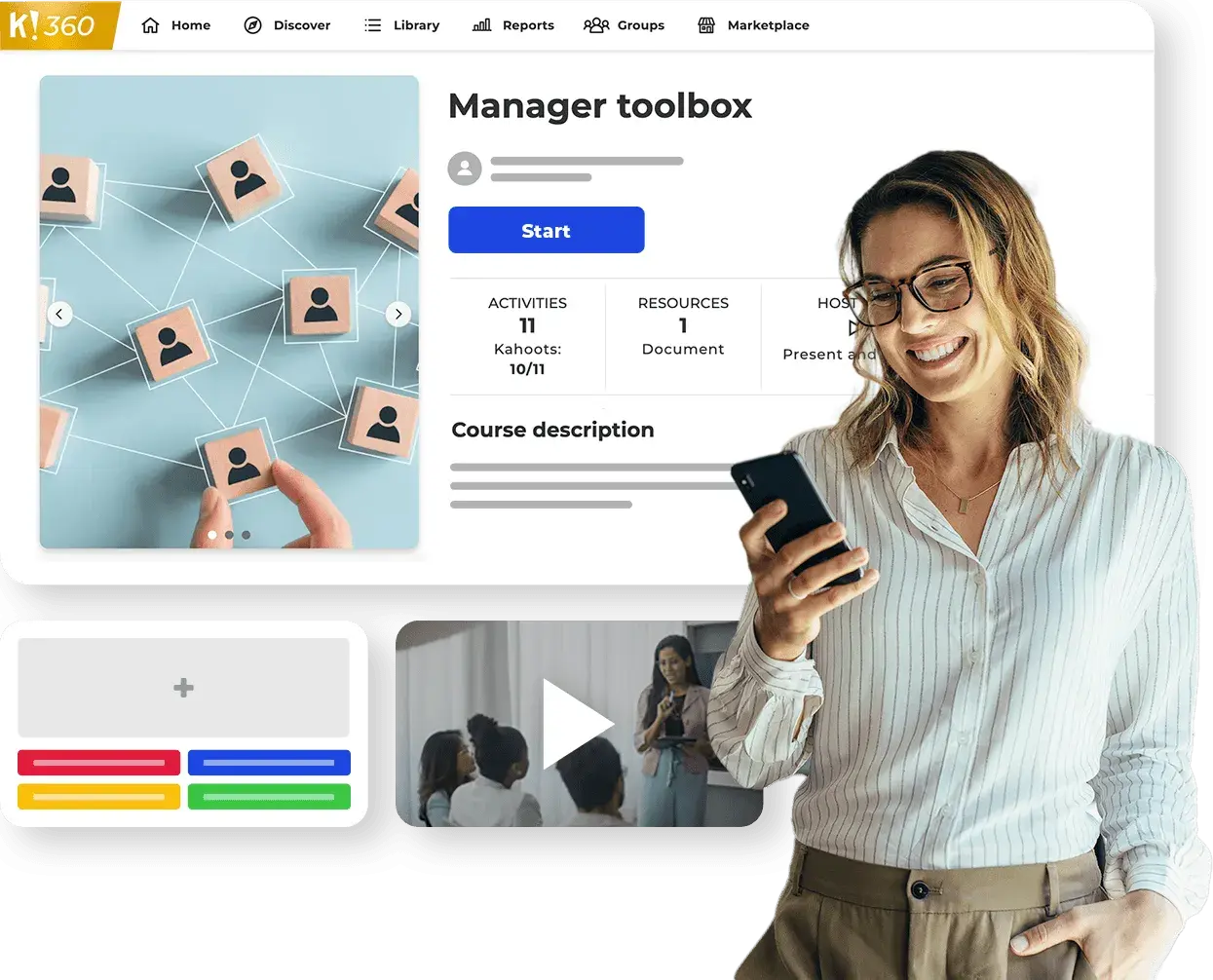
5. Cold Call Bingo
Have one of your reps make a cold call while the rest of the team listens on speakerphone.
Each listening rep has a Bingo card with common sales tactics and milestones (such as “price objection” or “need/pain identified”). The point is to get the team actively listening for and identifying prospect handling techniques while learning from a live example.
If you don’t want to put one salesperson under the microscope, have your team pair off and listen to their colleagues’ calls on a one-to-one basis. Speaking to prospects and customers is an acceptable level of pressure on a sales call.
I think having my whole team listening in on my call would give me stage fright, but a single teammate would be fine.
Reward the Bingo winner and the cold caller for a successful Bingo row or column covered.
Sales Team Building and Sales Meetings Games
- Common Ground
- Product Jeopardy
1. Common Ground
This game works particularly well for teams working in virtual environments. Split members of your team into smaller groups via your virtual meeting software’s conference room feature and have them come up with three things they all have in common that don’t involve work.
Ideally, members of each group will explore a variety of topics before figuring out what they all have in common. This exercise helps build trust and familiarity among team members, which is essential for creating a supportive work environment.
2. Product Jeopardy
How well does your team know your company’s product or service? Help them brush up on their skills by creating your own Jeopardy game focused on your company history and products. Start by creating five categories related to your company’s offerings. Sample categories can include specific product names, company mission, and values, or customer stats.
Then create five questions for each category with assigned point values between 100 and 500 correlated to the difficulty of the question. If you’re in need of a Jeopardy! style template, Lifewire has compiled a resourceful list of templates you can use to quiz your salespeople on product training.
You can also make this game remote work-friendly by creating a template using PowerPoint or Google Slides.
Pro tip: This game is particularly effective with a big onboarding class or for retraining a large group of existing reps.
Go Forth and Train Your Sales Team
Sales kickoff events can feel like death by PowerPoint after a couple of days, so gamification exercises are great ways to motivate sales reps to be more engaged in what they are learning, or even in their day-to-day sales pursuits.
I know firsthand that breaks in routine — like sales contests or team-building games — can refuel motivation when closing deals or connecting with interested prospects is challenging.
These exercises and games are perfect ways to sharpen the skills of your existing team, onboard a team of new sales hires, and foster friendly competition for morale and team-building.
Editor's note: This post was originally published in September 2019 and has been updated for comprehensiveness.
Sales Training


.png)
-Sep-24-2025-08-06-04-5244-PM.webp)
![Want to be a sales rep? Here’s everything you need to get started [+ tips]](https://53.fs1.hubspotusercontent-na1.net/hubfs/53/Operation-everest-getting-started-as-a-sales-rep-1-20250915-1709284.webp)




![Virtual vs. In-Person Training: Pros & Cons of Each [New Data]](https://53.fs1.hubspotusercontent-na1.net/hubfs/53/inperson-vs-online.webp)


![How to Get Into Sales Without a Degree [+ 7 Expert Tips]](https://53.fs1.hubspotusercontent-na1.net/hubfs/53/sales-job-degree%20(1).jpg)